When we think about cacti, a hardy plant with an erect growth habit comes to mind, but these hanging cacti tell a different story!
These plants are best for hanging baskets and pots placed up on plant stands and window sills, and given their resilient nature, they are easy to care for as well.
Many of them come with beautiful flowers and attractive foliage, which makes them a must-have addition to your succulent plant collection.
Best Hanging Cactus
1. Christmas Cactus
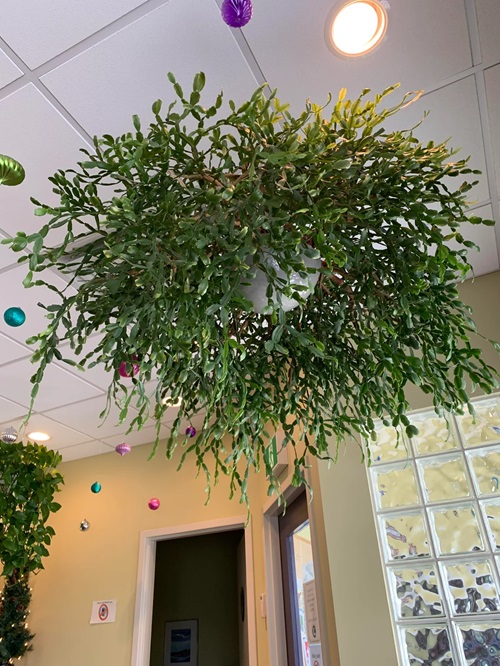
Botanical Name: Schlumbergera bridgesii
When we think of holiday plants, this cactus variety is the first one that comes to mind. Its trailing habit and beautiful winter blooming time make it a popular choice for indoor planting.
Growing Christmas cactus will give you an amazing plant with flat, segmented leaves that hang beautifully from pots and beautiful pink and purple flowers. Grow this plant in well-draining soil and use a pot with drainage holes so the soil doesn’t get soggy, which it hates.
2. Monkey Tail Cactus
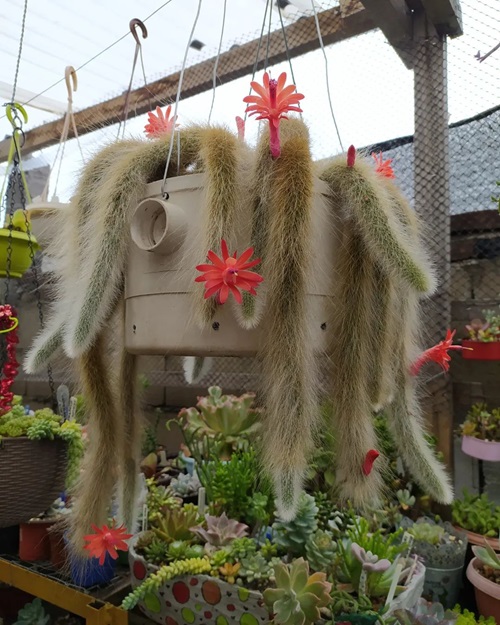
Botanical Name: Cleistocactus colademononis
The name and traits of this plant are enough to indicate why it made such an early entry into the list. The monkey tail’s long trailing stems are covered with fuzzy spines that resemble the tails of monkeys, which gives it an attractive look when grown in hanging planters.
Moreover, the monkey tail cactus has beautiful bright red or orange flowers that enhance the beauty of your surroundings in summer. It tolerates low humidity levels in its natural habitat, so dry air or high temperatures won’t affect it.
3. Rat Tail Cactus
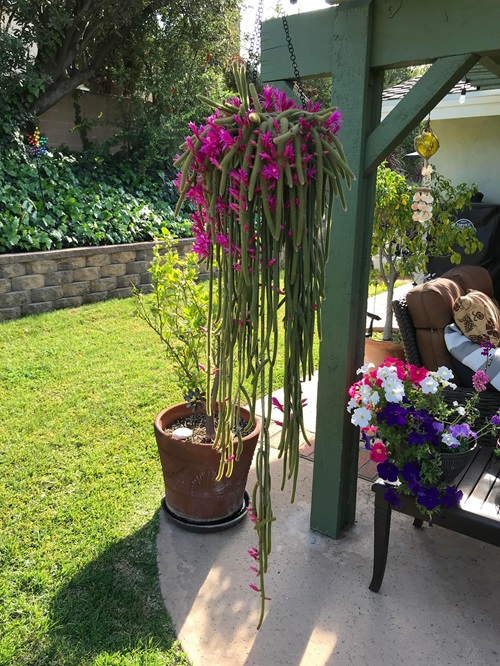
Botanical Name: Aporocactus flagelliformis
We are putting this one next to the list of hanging cacti because people often confuse it with monkey cacti. If you look closer, both are poles apart in their appearance.
Both rat and monkey cacti have long, trailing stems, but the monkey-tail cactus has thicker tails and spines than rat cacti.
Rat tail cactus also blooms with beautiful tubular flowers that thrive in bright, indirect light. Avoid too much low light or darkness, or your plant might have pale and weaker growth.
4. Fishbone Cactus
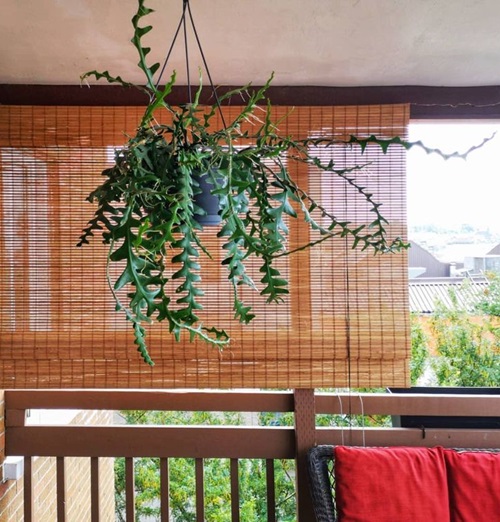
Botanical Name: Selenicereus anthonyanus
The hanging foliage of the fishbone cactus looks exactly like the bones of a fish, hence the name. This hanging cactus variety has wavy edges, and best fits your hanging baskets.
The fishbone cactus has white or pale yellow flowers that grow in early summer and have a sweet scent.
It is an extremely hardy plant that grows well with minimum care and can tolerate low watering, drought, and heat. You can grow it easily as long as you ensure airy, sandy soil that drains well.
5. Thanksgiving Cactus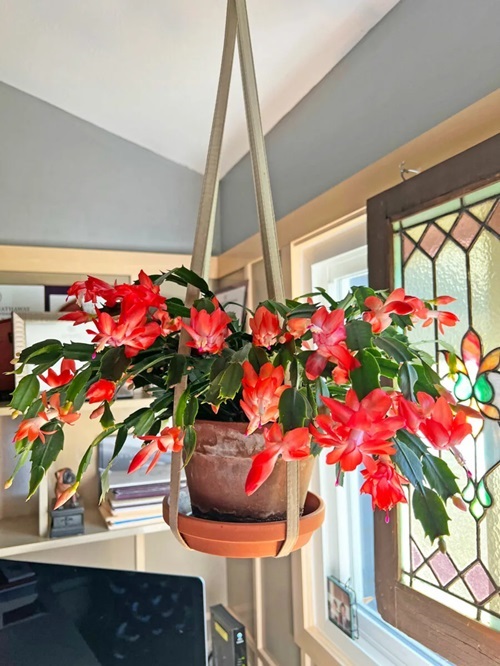
Botanical Name: Schlumbergera truncata
Closely related to the Christmas cactus, the Thanksgiving cactus also has flattened, segmented stems that hang down. Thanksgiving cactus can be easily told apart by the pointy teeth on the sides of each stem segment, which is lacking in Christmas cactus.
You can quickly grow this plant under low light, but the blooms might not be as good as expected unless it’s placed in sufficient indirect light.
When grown as a houseplant, use a slightly acidic and rich potting mix. If cared for well, this will give you beautiful pink flowers similar to Christmas cactus. Here are fun facts about this plant.
6. Dancing Bones
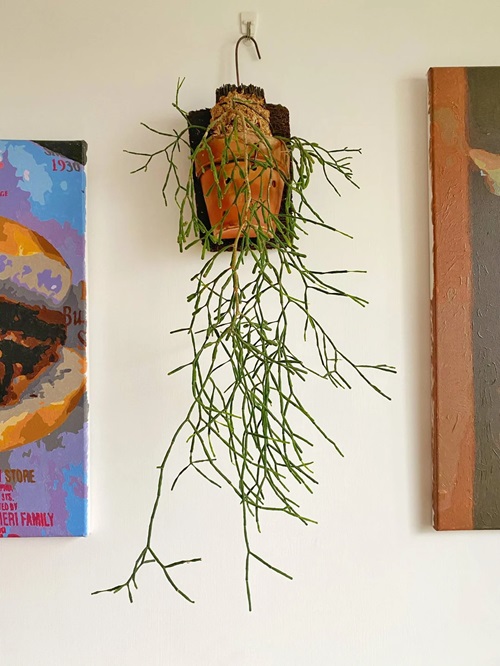
Botanical Name: Hatiora salicornioides
This is another hanging cactus variety with small, bell-shaped orange or yellow flowers. Its spineless stems grow up to two feet long and trail beautifully in planters at your home.
Dancing bones is not that tough to care for as long as you keep it away from harsh direct sun to save its delicate stems. Watering is also easy; it needs water only after the top soil is completely dry.
7. Mistletoe Cactus
Botanical Name: Rhipsalis baccifera
Mistletoe is an epiphytic cactus with pencil-like foliage that trails beautifully in the pot. You can grow it under the dappled sun and a well-draining soil mix. The watering technique is simple, but you should water it more often than your regular desert cactus variety.
This plant produces white flowers that later give way to fruits of the same color. These petite fruits look similar to mistletoe berries, which also explains its name.
Mistletoe cactus likes slight humidity, so you can consider placing it near a humidifier or humid place, like in a kitchen. You can also keep it on top of a pebble tray.
8. Peanut Cactus
Botanical Name: Echinopsis chamaecereus
The peanut cactus is a mat-forming plant with ribbed stems that form bunches and beautiful red flowers. While growing indoors, these hanging stems will easily grow anywhere from 6 inches to a foot. Outdoors, they are slightly longer.
Peanut cactus will grow beautifully under full sun and in well-draining, lightly fertile soil.
9. Chain Cactus
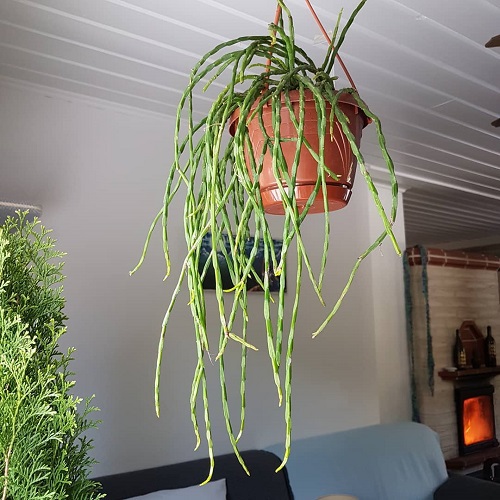
Botanical Name: Rhipsalis paradoxa
This cactus gets its name from its long, chain-like stems that cascade downwards. With the right care, these cascading stems can grow 12-15 feet. Chain cactus is a slow grower, so don’t expect it to fill up your hanging basket overnight.
But it’s definitely worth the wait. It’s a low-maintenance plant that thrives in bright, indirect light. Plus, it’s a hardy plant that can tolerate drought and neglect.
10. Queen of the Night
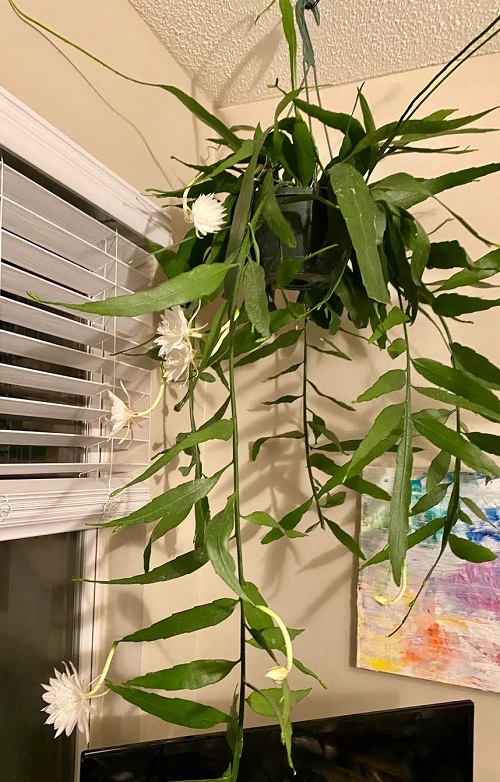
Botanical Name: Epiphyllum oxypetalum
The Queen of the Night gets its name from its large, fragrant flowers that bloom at night. The flowers are typically white or cream-colored and only bloom once a year, opening at night and closing with the morning sun. But the flowers aren’t all.
It is a climbing cactus that can be grown as a hanging plant. Its flat stems give the plant a unique appearance that can catch attention from afar. Queen of the Night is another slow grower that needs bright, indirect light and well-draining soil to thrive.



